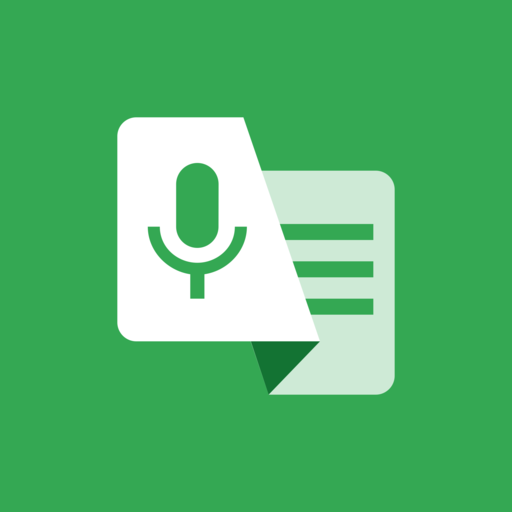
Google Voice Transcribe is a powerful tool that offers seamless speech-to-text transcription services. In this article, we will delve into the various aspects of this technology, discussing its features, applications, benefits, and limitations.
1. Introduction to Google Voice Transcribe
Google Voice Transcribe, a part of Google’s suite of tools, uses advanced speech recognition algorithms to convert spoken language into written text. The technology is designed to work seamlessly across devices, offering users a range of transcription options, from real-time dictation to transcription of pre-recorded audio files.
Highlights:
- Transcribes spoken language into written text.
- Uses advanced speech recognition algorithms.
- Offers real-time dictation and transcription of pre-recorded audio files.
2. Features and Functionality
2.1. Accuracy and Language Support
Google Voice Transcribe boasts high accuracy levels, even in noisy environments or when dealing with different accents. This is attributed to Google’s continued investment in machine learning and natural language processing technologies. Furthermore, Google Voice Transcribe supports multiple languages and dialects, ensuring a wide range of users can take advantage of this service.
Highlights:
- High accuracy levels in various environments.
- Supports multiple languages and dialects.
2.2. Integration with Google Services
Google Voice Transcribe is seamlessly integrated with other Google services, such as Google Docs, Google Meet, and Google Drive. This enables users to easily access transcribed text, share it with colleagues, or store it in the cloud for future reference. Additionally, the technology can be integrated with third-party applications using APIs, allowing developers to incorporate transcription services into their apps.
Highlights:
- Integrated with Google Docs, Google Meet, and Google Drive.
- Can be integrated with third-party applications using APIs.
3. Applications and Use Cases
3.1. Business and Professional Use
Google Voice Transcribe offers numerous applications for businesses and professionals, including:
- Meetings and Conferences: Real-time transcription of meetings and conferences helps attendees focus on the discussion without the need for manual note-taking. Transcripts can also be shared with team members who could not attend the event, ensuring everyone stays informed.
- Journalism and Content Creation: Journalists and content creators can use Google Voice Transcribe to record interviews and later convert the audio into written text for editing and publication.
- Customer Service: Call centers can use the technology to transcribe customer interactions, allowing for more efficient monitoring, quality control, and training of staff.
3.2. Accessibility and Inclusivity
Google Voice Transcribe also has applications in the realm of accessibility and inclusivity, offering:
- Assistance for Hearing Impaired: By providing real-time transcription of spoken language, Google Voice Transcribe enables hearing-impaired individuals to access information and participate in conversations.
- Language Learning: Students learning a new language can use Google Voice Transcribe to practice their listening and comprehension skills, and compare their spoken text with the transcribed output.
- Voice Strain Prevention: For individuals with voice strain issues or those recovering from surgery, Google Voice Transcribe allows them to communicate effectively without putting stress on their vocal cords.
Highlights:
- Assists hearing-impaired individuals.
- Facilitates language learning.
- Helps prevent voice strain.
4. Benefits of Google Voice Transcribe
Some key benefits of Google Voice Transcribe include:
- Time Savings: Transcribing audio manually can be a time-consuming process. Google Voice Transcribe automates this task, allowing users to focus on other important tasks.
- Increased Productivity: By providing accurate transcriptions, Google Voice Transcribe helps users stay organized and improves overall productivity.
- Cost-Effectiveness: Google Voice Transcribe can save businesses money by reducing the need for professional transcription services.
- Enhanced Collaboration: Transcripts can be shared easily among team members, promoting collaboration and ensuring everyone stays on the same page.
Highlights:
- Saves time.
- Increases productivity.
- Cost-effective.
- Enhances collaboration.
5. Limitations and Challenges
Despite its many advantages, Google Voice Transcribe is not without its limitations:
- Privacy Concerns: As with any cloud-based service, there may be concerns surrounding the privacy and security of the transcribed data.
- Accuracy Limitations: Although Google Voice Transcribe boasts high accuracy levels, some users may still experience occasional errors, especially when dealing with highly technical or industry-specific jargon.
- Internet Dependency: Real-time transcription using Google Voice Transcribe requires a stable internet connection, which may not always be available.
Highlights:
- Privacy concerns.
- Potential accuracy limitations.
- Internet dependency.
6. Conclusion
Google Voice Transcribe is a powerful and versatile tool that has the potential to revolutionize the way we approach speech-to-text transcription. With its high accuracy levels, support for multiple languages, and seamless integration with Google services and third-party applications, it offers numerous benefits for businesses, professionals, and individuals alike.
While there are some limitations and challenges to consider, such as privacy concerns and accuracy limitations, the overall benefits of Google Voice Transcribe make it a valuable addition to any workflow. As technology continues to advance, we can expect further improvements in the accuracy and functionality of speech-to-text transcription services, making them an essential tool for communication and collaboration in the future.